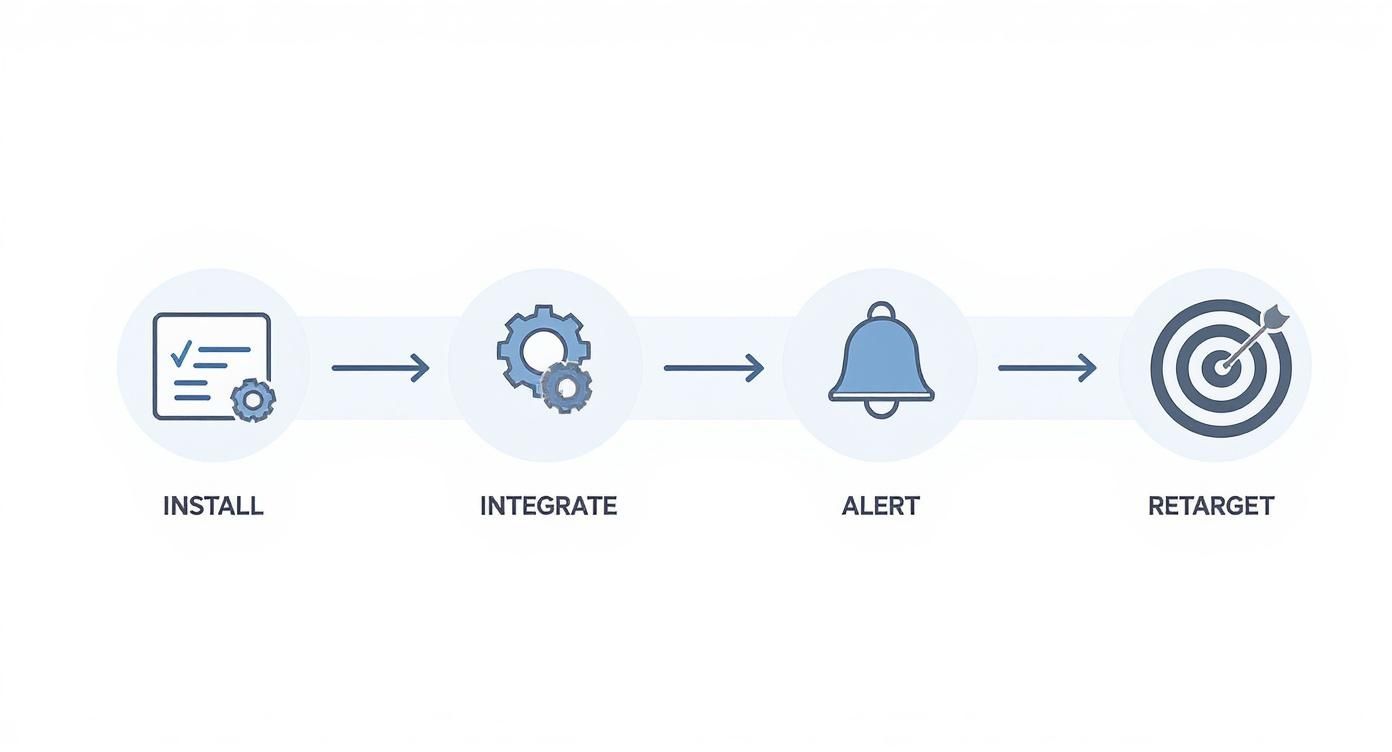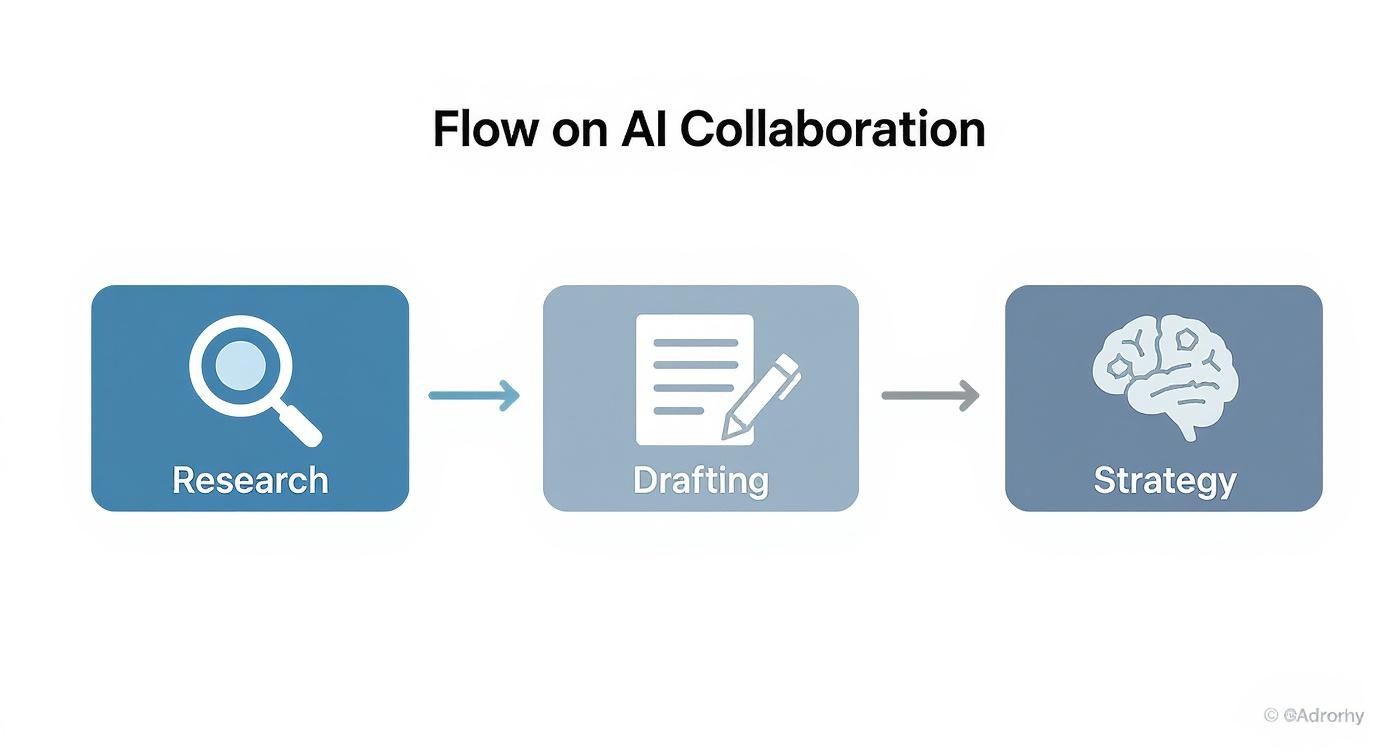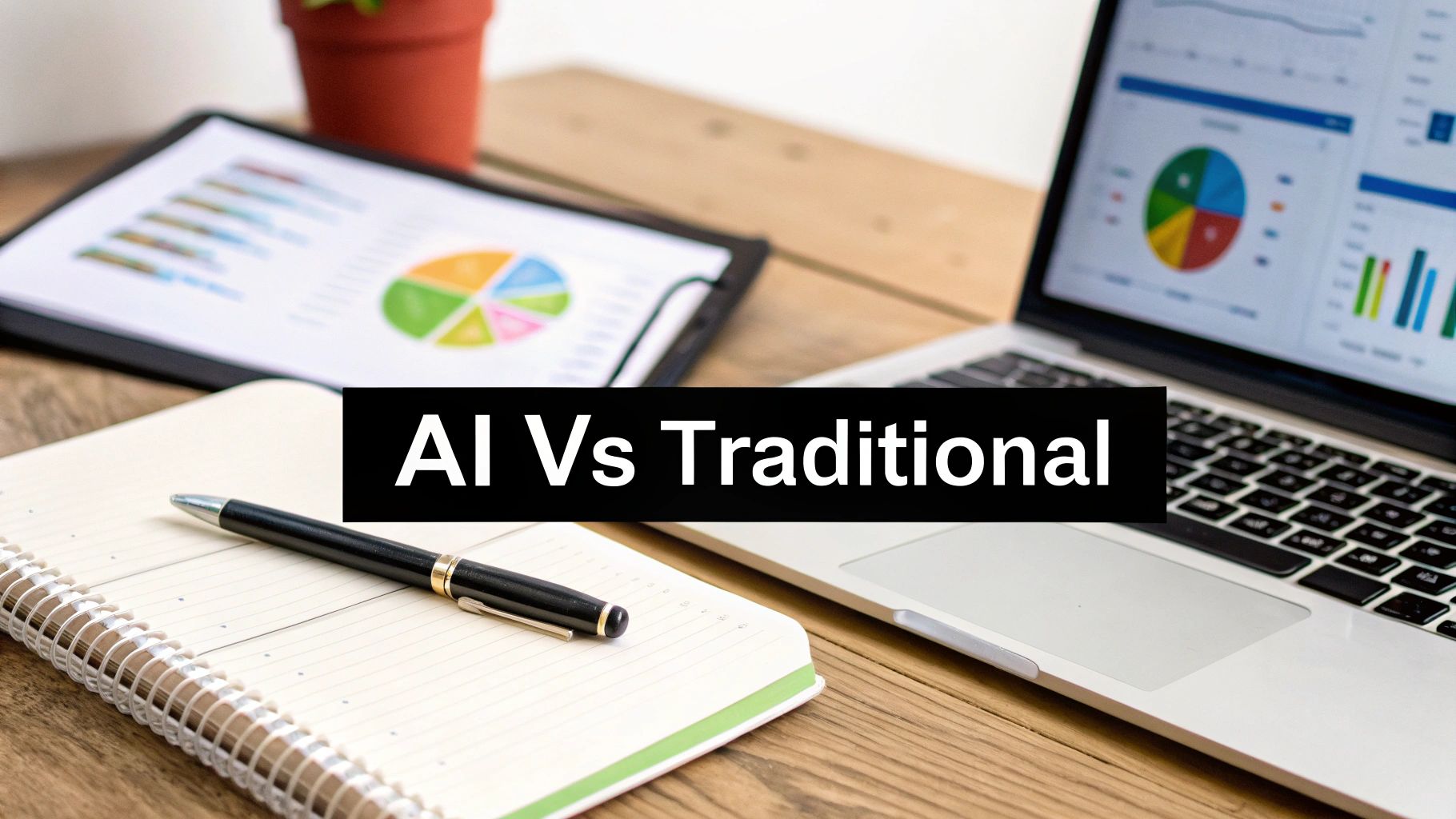Top 12 Marketing Channels B2B: A Complete 2025 Guide
In the complex B2B landscape, selecting the right marketing channels is the difference between stagnation and exponential growth. While the options are vast, from traditional trade shows to sophisticated ABM plays on LinkedIn, a handful of channels consistently deliver measurable ROI. Choosing where to invest your budget and team's energy is a critical strategic decision that directly impacts lead quality, sales cycle length, and ultimately, revenue.
This guide moves beyond generic advice to provide a comprehensive breakdown of the top marketing channels B2B leaders are leveraging today. We'll offer a direct comparison of each channel's strengths and weaknesses, helping you build a multi-channel strategy that aligns perfectly with your business goals. You won't just learn what the channels are; you'll understand how and when to deploy them effectively.
For each of the twelve channels covered, you will find:
- Practical Use Cases: Clear scenarios detailing when a specific channel is most effective.
- Target Audience Alignment: Guidance on matching the channel to your ideal customer profile.
- Essential KPIs: The key metrics you must track to measure success and justify investment.
- Actionable Workflows: Step-by-step implementation frameworks to get you started quickly.
Furthermore, we will explore how AI-driven platforms like marketbetter.ai are revolutionizing these channels. You'll see how to use AI to scale content creation, personalize engagement, and optimize campaign performance with unprecedented efficiency, turning your marketing efforts into a predictable growth engine. Let's dive into the channels that will define your success.
1. LinkedIn Marketing & Account-Based Marketing (ABM)
LinkedIn stands as the undisputed champion of B2B social media, but its true power is unlocked when combined with a targeted Account-Based Marketing (ABM) strategy. While broad LinkedIn marketing casts a wide net, ABM focuses marketing and sales resources on a predefined set of high-value target accounts, treating each one as a market of its own. This hybrid approach transforms one of the most effective marketing channels b2b has to offer from a lead generation tool into a precision-guided revenue engine.
Instead of just broadcasting content, ABM on LinkedIn involves creating hyper-personalized campaigns for key decision-makers within specific companies. For example, a company like Salesforce might use LinkedIn Matched Audiences to serve case studies about financial services transformation directly to C-suite executives at major banks, while simultaneously having their account executives engage through personalized InMail.
Strategic Implementation
-
When to Use: Ideal for B2B companies with high-value, long sales cycles where multiple stakeholders are involved in the buying decision. It’s particularly effective for breaking into enterprise-level accounts or specific, lucrative industry verticals.
-
Sample Workflow:
- Account Selection: Sales and marketing collaboratively build a target account list using firmographic data and revenue potential. Actionable Tip: Use your CRM data to identify closed-won deals with the highest lifetime value and shortest sales cycles to model your ideal target accounts.
- Contact Identification: Use LinkedIn Sales Navigator to map out the buying committee at each target account.
- Campaign Activation: Launch a multi-touch campaign featuring sponsored content tailored to the account's pain points, personalized InMail from sales reps, and retargeting ads. To further empower your team, explore practical advice on writing effective LinkedIn posts for B2B sales managers to enhance organic reach.
- Measurement & Refinement: Track account-level engagement (not just individual leads) using KPIs like account penetration, engagement score, and pipeline velocity. For those looking to streamline their outreach, you can learn more about automating LinkedIn prospecting on marketbetter.ai.
2. Email Marketing & Nurture Campaigns
Despite the rise of social media, email remains one of the highest-ROI marketing channels b2b offers, especially when paired with automated nurture campaigns. This strategy moves beyond simple email blasts by using segmented, automated sequences to guide prospects through the buyer's journey. Instead of a one-size-fits-all message, nurture campaigns deliver the right content at the right time, building trust and moving leads from awareness to conversion methodically.
For instance, a company like Marketo might use a multi-touch nurture campaign to guide an enterprise prospect who downloaded a whitepaper, sending them a case study a week later, followed by an invitation to a relevant webinar. This is a stark contrast to simply adding them to a generic newsletter, as it tailors the journey to the user's initial interest and engagement level, significantly increasing the likelihood of a sales-qualified lead.
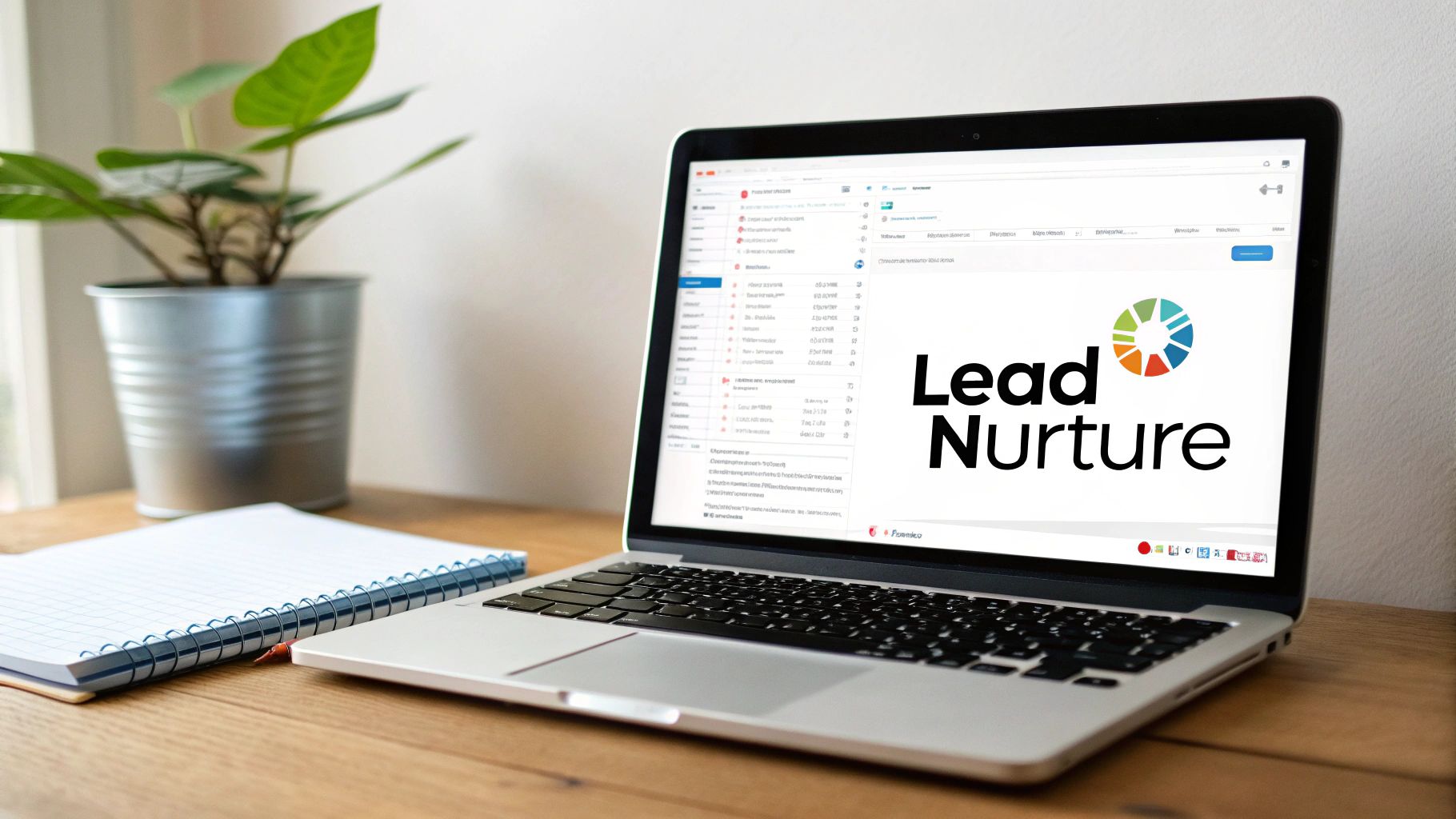
Strategic Implementation
-
When to Use: Essential for B2B companies with a considered purchase process and a steady flow of inbound leads. It is highly effective for educating prospects, re-engaging cold leads, and warming up marketing-qualified leads (MQLs) before they are passed to the sales team.
-
Sample Workflow:
- Lead Capture & Segmentation: A user downloads a top-of-funnel asset (e.g., an ebook) and is tagged based on their industry, job title, and the content's topic. Actionable Tip: Use hidden fields on your forms to capture source data (e.g., "Source=LinkedIn Ad") to tailor the first nurture email to the context of their visit.
- Nurture Sequence Activation: The contact is automatically enrolled in a pre-built 5-7 touchpoint email sequence. The first email delivers the requested asset, subsequent emails offer related case studies, blog posts, and webinar invites.
- Lead Scoring & Hand-off: The automation platform tracks engagement (opens, clicks, website visits). Once a lead reaches a predefined score threshold, they are flagged as an MQL and assigned to a sales representative for personalized follow-up.
- Optimization: Continuously A/B test subject lines, CTAs, and send times to improve open and click-through rates. Monitor unsubscribe rates to ensure content remains relevant and valuable.
3. Content Marketing & Thought Leadership
Content marketing and thought leadership are foundational marketing channels b2b companies use to build trust and authority long before a sales conversation begins. Instead of a direct sales pitch, this strategy focuses on creating and distributing valuable, relevant content like in-depth blog posts, original research reports, and insightful webinars. This approach attracts and educates target audiences, positioning your brand as the go-to expert in your industry and drawing prospects to you organically.
A prime example is HubSpot, which built its empire by providing an extensive library of free marketing and sales resources, attracting millions of visitors who later become customers. Similarly, McKinsey & Company uses its proprietary research and industry insights to engage C-suite executives, building credibility that directly supports its high-value consulting services. This channel works by trading expertise for attention and trust.

Strategic Implementation
-
When to Use: Essential for B2B organizations with complex products or services, long sales cycles, and a need to educate the market. It is particularly powerful for building a long-term, sustainable pipeline and differentiating from competitors on expertise rather than just features or price.
-
Sample Workflow:
- Audience & Topic Research: Identify your ideal customer profile's primary pain points and conduct keyword research to find topics with high search intent. Actionable Tip: Interview your sales team and ask, "What are the top 5 questions prospects ask on every demo call?" Turn those answers into your next blog posts.
- Content Creation & Pillar Strategy: Develop a "pillar" piece of content, like an ultimate guide or research report, then break it down into smaller assets (blog posts, social media updates, video clips) to maximize its reach.
- Gated & Ungated Distribution: Promote ungated content (blogs, articles) broadly to build brand awareness. Use high-value gated content (whitepapers, webinars) to capture leads for nurturing.
- Performance Measurement: Track metrics like organic traffic, keyword rankings, time on page, and conversion rates on gated assets. Use tools like Google Analytics to measure how content contributes to lead generation and pipeline influence.
4. Trade Shows, Conferences & Events
Despite the digital shift, in-person and virtual events remain one of the most impactful marketing channels b2b offers for direct engagement. Events provide a unique opportunity to connect with high-intent prospects, demonstrate complex products, and build tangible relationships that are difficult to replicate online. Unlike digital channels that rely on asynchronous communication, events create a focused environment for real-time interaction, competitive analysis, and partnership building, making them a high-stakes, high-reward channel.
From massive industry gatherings like Salesforce's Dreamforce, which attracts over 170,000 attendees, to niche vertical-specific symposiums, events allow companies to get in front of key decision-makers actively seeking solutions. This direct access compresses the sales cycle by enabling on-the-spot qualification and relationship nurturing, moving beyond lead generation to create genuine pipeline momentum.
Strategic Implementation
-
When to Use: Best suited for B2B companies with complex products or services that benefit from in-person demonstrations. It is highly effective for penetrating new markets, strengthening relationships with existing customers, and generating high-quality leads in industries where face-to-face trust is paramount.
-
Sample Workflow:
- Event Selection: Research and select events based on the quality and relevance of the attendee list, not just the total number of participants. Prioritize events where your ideal customer profile (ICP) is highly concentrated.
- Pre-Event Outreach: Launch a targeted campaign weeks in advance to schedule meetings with key attendees and prospects. Use email and social media to promote your booth number and any special offers. Actionable Tip: Offer a high-value, exclusive "event-only" demo or consultation to incentivize pre-booked meetings.
- On-Site Execution: Staff your booth with well-trained team members who can qualify leads effectively. Use lead capture technology to scan badges and immediately segment contacts for follow-up.
- Post-Event Nurturing: Initiate a follow-up sequence within 24-48 hours of the event. To maximize your ROI, you can learn more about crafting an effective post-event follow-up strategy on marketbetter.ai.
5. Paid Search Advertising (SEM/Google Ads)
Paid Search Advertising, often called Search Engine Marketing (SEM), is the practice of placing ads on search engines like Google and Bing. This channel captures high-intent prospects at the exact moment they are actively searching for solutions, making it one of the most direct and measurable marketing channels b2b has available. Unlike SEO, which builds organic visibility over time, SEM offers immediate placement at the top of search results for critical keywords.
This channel's power lies in its precision. A company like HubSpot can bid on "CRM software for small business" to capture users in the final stages of their buying journey. Similarly, a specialized SaaS provider like ServiceTitan can run highly targeted ads for keywords such as "HVAC dispatch software," ensuring their budget is spent only on reaching their ideal customer profile. This direct approach delivers qualified traffic straight to dedicated landing pages, accelerating the sales cycle.
Strategic Implementation
-
When to Use: Essential for capturing bottom-of-the-funnel demand where prospects show clear purchase intent. It’s also highly effective for launching new products, promoting time-sensitive offers like webinars, or quickly testing messaging and value propositions in a live market environment.
-
Sample Workflow:
- Keyword Research: Build comprehensive keyword lists mapped to different stages of the buyer journey, from problem-aware (e.g., "how to improve customer support") to solution-aware (e.g., "Zendesk competitors").
- Campaign Structuring: Organize campaigns using tight themes, such as Single Keyword Ad Groups (SKAGs), to maximize ad relevance and Quality Score. Aggressively use negative keywords to filter out irrelevant clicks. Actionable Tip: Create a negative keyword list from your site search data to see what irrelevant terms users are already searching for on your own website.
- Ad & Landing Page Creation: Write compelling ad copy that speaks directly to the searcher's pain point and create a dedicated, high-converting landing page for each ad group to ensure a seamless user experience.
- Tracking & Optimization: Implement robust conversion tracking for every stage, from initial form submission to a qualified demo request. Continuously analyze performance data, A/B test ad copy, and adjust bids to maximize return on ad spend (ROAS).
6. Webinars & Virtual Events
Webinars and virtual events have evolved from simple online presentations into powerful, interactive platforms for lead generation and nurturing. Unlike static content like a whitepaper, webinars offer a dynamic, real-time channel to demonstrate expertise, answer questions directly, and build personal connections with a qualified audience. This makes them one of the most effective marketing channels b2b has for engaging prospects in a high-value, educational setting, guiding them from awareness to consideration within a single session.
For instance, a company like HubSpot leverages webinars to attract thousands of marketing professionals by offering expert-led training on relevant topics. Similarly, Gartner uses its webinars to showcase its analyst expertise, reinforcing its authority and generating leads for its research services. The key is to provide genuine value, solving a specific prospect problem rather than delivering a thinly veiled sales pitch.
Strategic Implementation
-
When to Use: This channel is ideal for B2B companies looking to educate prospects on complex solutions, generate high-quality leads, and accelerate pipeline movement. It works exceptionally well for mid-to-bottom-of-funnel engagement, where prospects are actively seeking solutions and detailed information.
-
Sample Workflow:
- Topic Selection: Identify a critical pain point your target audience faces and frame the webinar as the solution. Use compelling, benefit-driven titles.
- Promotion & Registration: Promote the event across email, social media, and paid channels at least two weeks in advance. Use a dedicated landing page to capture registrations.
- Engagement Strategy: During the event, use interactive elements like polls, Q&A sessions, and chat to keep the audience engaged. Present for 45 minutes, leaving 15 minutes for questions. Actionable Tip: Launch a poll at the 10-minute mark asking about attendees' biggest challenge related to the topic; use the results to tailor the rest of your presentation.
- Post-Event Follow-up: Within 24 hours, send the recording to all registrants (both attendees and no-shows), segmenting the messaging. Offer attendees a clear next step, like a demo booking, and offer no-shows another chance to engage.
- Content Repurposing: Maximize ROI by turning the webinar content into blog posts, short video clips for social media, and a downloadable slide deck.
7. Direct Sales & Outbound Prospecting
Direct sales and outbound prospecting represent one of the most traditional yet enduring marketing channels b2b offers. This hands-on approach involves sales development representatives (SDRs) proactively reaching out to potential customers through channels like phone calls, personalized emails, and direct mail. While often seen as purely a sales function, modern outbound prospecting is a highly strategic marketing channel that combines data intelligence, deep personalization, and multi-touch sequences to engage cold prospects and convert them into qualified opportunities.
This method moves beyond generic cold calling, focusing instead on a value-driven, consultative approach. For instance, a company like Gong uses its own conversation intelligence software to train its SDRs, enabling them to analyze call recordings and refine their objection handling for better outcomes. Similarly, HubSpot’s sales team uses a highly coordinated strategy of warm outreach, leveraging inbound content engagement to fuel their personalized prospecting efforts, demonstrating the powerful synergy between inbound and outbound tactics.
Strategic Implementation
-
When to Use: This channel is indispensable for companies with a high average contract value (ACV), complex products requiring education, or when targeting specific, hard-to-reach enterprise accounts. It is most effective when your ideal customer profile (ICP) is clearly defined and you need to generate high-quality pipeline proactively rather than waiting for inbound leads.
-
Sample Workflow:
- ICP & List Building: Define your ideal customer profile and build a highly targeted, verified list of prospects and key decision-makers. Actionable Tip: Don't just build a list; tier it. A-tier gets hyper-personalization, B-tier gets semi-personalized, C-tier gets automated outreach.
- Research & Personalization: Before any outreach, research each prospect and their company to identify pain points, recent achievements, or industry trends to tailor your message.
- Multi-Touch Cadence: Launch a structured outreach sequence across multiple channels (e.g., email, phone, LinkedIn) over several weeks. A typical cadence involves 5-8 touches.
- Engage & Qualify: Focus initial conversations on understanding the prospect's challenges and qualifying their fit. Lead with value and insights, not a hard product pitch.
- Measure & Optimize: Track key metrics like connection rate, reply rate, meetings booked, and pipeline generated. Use this data to A/B test messaging and refine your outreach cadence for continuous improvement.
8. Sponsorships & Partnerships
Beyond creating your own content, strategically aligning your brand with established platforms and complementary companies can be one of the most powerful marketing channels b2b has to offer. This channel moves beyond simple advertising by borrowing trust and accessing highly-curated audiences through sponsorships of industry podcasts, newsletters, and events, or through deeper co-marketing partnerships. This approach provides a powerful endorsement, placing your brand directly within the ecosystem your target audience already trusts.
For instance, a cybersecurity firm might sponsor a popular IT leadership podcast, gaining direct access to engaged CIOs and CISOs. Similarly, a project management software like Asana might partner with a time-tracking tool like Harvest for a co-branded webinar, offering a comprehensive productivity solution to a shared audience. This symbiotic relationship provides immediate credibility and a targeted distribution channel that would take years to build independently.
Strategic Implementation
-
When to Use: This channel is highly effective for building brand awareness and credibility within niche markets. It's ideal for startups looking to gain a foothold, or established companies aiming to penetrate a new vertical. Partnerships are particularly valuable when your product's value is enhanced by integration with another tool.
-
Sample Workflow:
- Audience & Partner Identification: Pinpoint podcasts, newsletters, and events where your ideal customer profile (ICP) is highly engaged. Simultaneously, identify non-competing companies that serve a similar customer base.
- Opportunity Vetting: Analyze the potential partner's audience demographics, engagement rates, and brand alignment. For sponsorships, request a media kit and past performance data. For partnerships, outline a clear joint value proposition. Actionable Tip: Before committing, ask the potential partner for an anonymous case study or reference from a previous sponsor to verify their ROI claims.
- Campaign Co-Creation: Work with the sponsor to create an authentic ad read or sponsored segment. For partnerships, develop a joint marketing campaign, such as a co-authored whitepaper, integrated product feature, or a shared booth at a trade show.
- Performance Measurement: Track referrals using unique URLs or promo codes. Measure impact through brand lift studies, direct traffic from partner sites, and the number of leads generated from co-marketing activities.
9. Display Advertising & Programmatic Display
Display advertising, often seen as a B2C staple, has evolved into a sophisticated tool for B2B marketers, especially when powered by programmatic technology. Programmatic display uses AI and real-time bidding to automate the purchase of ad space, ensuring visual ads are placed on websites, apps, and networks to reach highly specific professional audiences. This moves beyond simple brand awareness, turning display into one of the more versatile marketing channels b2b marketers can use for retargeting, account-based advertising, and top-of-funnel engagement.
Instead of just blanketing the web, a B2B company like HubSpot can use programmatic display to retarget website visitors who downloaded an e-book, serving them ads for a product demo across relevant industry publications. Similarly, a company like G2 can target users who have recently searched for specific software categories, placing ads on tech news sites they frequent. This targeted approach ensures ad spend is focused on audiences already showing interest or fitting a precise ideal customer profile.
Strategic Implementation
-
When to Use: Excellent for building brand awareness in new markets, retargeting engaged website visitors, and supporting ABM campaigns by keeping your brand in front of target accounts. It is most effective for top-of-funnel and mid-funnel activities where visual reinforcement is key.
-
Sample Workflow:
- Audience Definition: Define your target audience using first-party data (website visitors, CRM lists) and third-party data (job titles, company size, industry). Actionable Tip: Build a retargeting audience of users who visited your pricing page but didn't convert, and serve them a testimonial ad to build social proof.
- Creative Development: Design multiple ad creative variations (3-5 per campaign) with clear calls-to-action tailored to different stages of the buyer's journey.
- Platform & Targeting Setup: Choose a demand-side platform (DSP) and set up campaigns using a mix of targeting methods like contextual (placing ads on industry-relevant sites), lookalike audiences, and direct retargeting.
- Optimization & Measurement: Monitor performance using KPIs like view-through conversions, click-through rates (CTR), and cost per acquisition (CPA). Implement frequency capping to prevent ad fatigue and A/B test ad copy and visuals to improve engagement.
10. SEO & Organic Search
Search Engine Optimization (SEO) is the long-game strategy for dominating the digital shelf. Unlike paid channels that stop delivering once the budget runs out, a well-executed SEO strategy builds a durable asset that generates compounding returns over time. It’s about making your website the most authoritative and helpful answer for the complex questions your B2B buyers are asking, transforming organic search into one of the most cost-effective and sustainable marketing channels b2b practitioners can leverage to drive high-intent traffic.
For B2B, SEO isn't just about ranking for product names; it's about capturing intent across the entire buying journey. A company like Stripe, for instance, doesn’t just rank for "payment processing"; it also dominates developer-focused queries like "API documentation for payments," capturing both executive and technical audiences. This approach establishes deep topical authority and builds a moat against competitors.
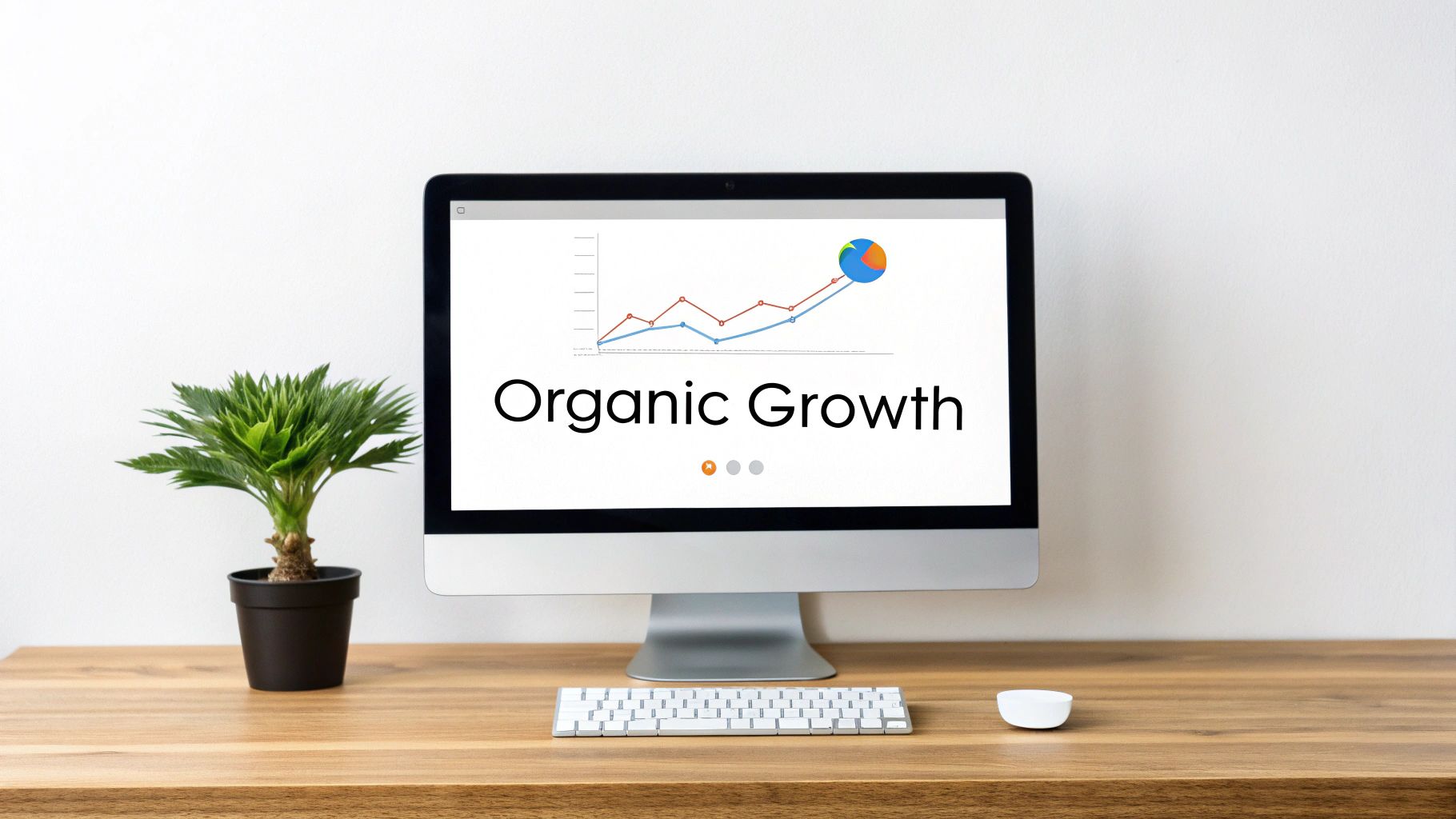
Strategic Implementation
-
When to Use: Essential for B2B companies in established markets with a high volume of problem-aware search queries. It's a foundational channel for businesses aiming for long-term, scalable growth and brand authority, particularly when the cost-per-click in paid channels is prohibitively high.
-
Sample Workflow:
- Buyer Persona Keyword Research: Go beyond simple keywords. Map the entire customer journey and identify the questions, pain points, and comparison terms used by each persona at every stage. Actionable Tip: Use tools like AlsoAsked.com to find the "People Also Ask" questions related to your core keywords and build content that answers them directly.
- Pillar & Cluster Content Creation: Develop comprehensive "pillar" pages (e.g., "The Ultimate Guide to CRM Implementation") supported by in-depth "cluster" articles that target niche, long-tail keywords (e.g., "how to migrate data to a new CRM").
- Technical & On-Page Optimization: Ensure your site is technically sound with a logical structure, fast load times (Core Web Vitals), and strong internal linking. Optimize every page for its target search intent.
- Authority Building: Execute a targeted backlink strategy, focusing on acquiring links from reputable industry publications, partners, and directories to build your site's domain authority and trustworthiness in the eyes of search engines.
11. Customer Referral Programs & Word-of-Mouth
While many B2B marketing channels focus on acquiring new customers from scratch, referral programs leverage your most valuable asset: your existing satisfied clients. This channel transforms happy customers into a powerful extension of your sales team, driving high-quality, high-trust leads through structured incentives and organic advocacy. Unlike colder outbound tactics, referred leads enter the sales process with a pre-established level of trust, drastically shortening sales cycles and increasing conversion rates.
This approach capitalizes on the inherent credibility that comes from a peer recommendation. For example, Dropbox's famous referral program rewarded both the referrer and the new user with extra storage, creating a viral loop that fueled its initial growth. Similarly, B2B companies can offer service credits, gift cards, or exclusive features to incentivize referrals. This transforms word-of-mouth from a passive benefit into an active, scalable one of your core marketing channels b2b.
Strategic Implementation
-
When to Use: Best for B2B companies with a strong base of satisfied, long-term customers and a product or service that delivers clear, demonstrable value. It is particularly effective for businesses looking to lower their customer acquisition cost (CAC) and improve lead quality.
-
Sample Workflow:
- Identify Advocates: Use Net Promoter Score (NPS) surveys or customer satisfaction (CSAT) scores to identify your most enthusiastic customers. Actionable Tip: Automatically trigger a referral program invitation email to any customer who gives you a 9 or 10 on an NPS survey.
- Define Incentives: Create a clear, compelling two-sided incentive structure that rewards both the referrer for their effort and the new customer for signing up.
- Launch & Promote: Make the program highly visible on your website, in email signatures, and through customer newsletters. To effectively manage and scale these programs, consider leveraging the right tools, such as the top referral marketing software platforms that automate tracking and reward fulfillment.
- Track & Nurture: Integrate referral tracking into your CRM to attribute new business correctly. Immediately follow up with referred leads with a personalized message acknowledging the referrer.
12. Marketing Automation & Lead Nurturing Platforms
Marketing automation platforms are the central nervous system for modern B2B marketing, orchestrating and scaling personalized communication across multiple touchpoints. Far more than just an email tool, these systems integrate CRM data, web behavior, and content engagement to nurture leads from initial awareness to sales-readiness. They are the engine that powers many other marketing channels b2b professionals rely on, ensuring no qualified lead falls through the cracks.
For instance, a platform like HubSpot can automatically trigger a personalized email sequence when a prospect downloads a whitepaper. Meanwhile, a more enterprise-focused tool like Marketo can build sophisticated, branching nurture streams based on a lead’s industry, job title, and specific content interactions, ensuring each prospect receives the most relevant information at the right time. This automated, intelligent nurturing is crucial for managing long and complex sales cycles.
Strategic Implementation
-
When to Use: Essential for B2B companies with a consistent flow of inbound leads that need systematic nurturing over time. It is particularly powerful for businesses aiming to align sales and marketing teams by creating a standardized, data-driven process for lead handoffs.
-
Sample Workflow:
- Define a Lead Scoring Model: Collaboratively with sales, assign point values to demographic data (e.g., job title, company size) and behavioral actions (e.g., webinar attendance, pricing page visits). Actionable Tip: Schedule a quarterly review of your lead scoring model with the sales team. Analyze closed-won deals to see if the scoring accurately predicted success and adjust accordingly.
- Build Nurture Streams: Create segmented email and content workflows tailored to different buyer personas and their stage in the funnel. For example, a "Technical Evaluator" gets case studies, while a "C-Suite" contact receives ROI reports.
- Set MQL Criteria: Establish a lead score threshold that, once met, automatically qualifies a lead as "Marketing Qualified" and assigns it to a sales representative in the CRM.
- Monitor and Optimize: Regularly analyze workflow performance, A/B test email subject lines, and refine lead scoring rules based on which leads convert to customers. To stay ahead of the curve, you can discover a new generation of AI-powered marketing automation tools on marketbetter.ai that further enhance personalization.
B2B Marketing Channels — 12-Point Comparison
| Channel | Implementation Complexity 🔄 | Resource Requirements ⚡ | Expected Outcomes 📊 | Ideal Use Cases 💡 | Key Advantages ⭐ |
|---|---|---|---|---|---|
| LinkedIn Marketing & ABM | High — multi-channel setup, personalization workflows | High cost + dedicated team; Sales Navigator & ad spend | Highly qualified pipeline; strong enterprise ROI | Targeting C‑suite and named accounts, account expansion | Precise decision‑maker targeting; measurable conversions |
| Email Marketing & Nurture Campaigns | Medium — automation + segmentation setup | Low–Medium tool cost; content and list maintenance | High ROI; predictable lead progression and conversions | Lead nurturing, onboarding, cross‑sell campaigns | Direct inbox access; excellent attribution and scale |
| Content Marketing & Thought Leadership | High — editorial strategy and production cadence | High time and creative resources; SEO investment | Authority building, organic traffic, long‑term leads | Inbound growth, brand differentiation, sales enablement | Evergreen value; improves SEO and trust |
| Trade Shows, Conferences & Events | High — logistics, booth and staffing coordination | Very high cost (booth, travel, materials); time‑intensive | High‑quality, relationship‑driven leads; brand visibility | Product demos, industry leadership, large‑scale networking | Face‑to‑face trust building; immediate feedback |
| Paid Search (SEM / Google Ads) | Medium — campaign structure and ongoing optimization | Variable budget; requires skilled PPC management | Immediate high‑intent traffic and measurable ROI | Capturing active demand and short‑term lead generation | Fast visibility; precise intent targeting and tracking |
| Webinars & Virtual Events | Medium — platform setup and content production | Moderate cost; promotion and presenter prep needed | Engaged leads; demo-ready prospects; repurposable assets | Product demos, educational lead capture, thought leadership | High engagement; scalable and repurpose‑friendly |
| Direct Sales & Outbound Prospecting | High — team hiring, training, and sequence design | High human resource cost; CRM and data tools | Direct conversions; relationship-driven deals | Complex sales, enterprise or passive prospects | Personalized outreach; immediate objection handling |
| Sponsorships & Partnerships | Medium — partner selection and negotiation | Variable cost; coordination with partner teams | Targeted brand exposure and third‑party credibility | Niche audience reach, co‑marketing and integrations | Endorsement effect; access to engaged audiences |
| Display Advertising & Programmatic | Medium — audience setup and creative testing | Moderate media spend; programmatic platform fees | Top‑of‑funnel awareness and retargeting reach | Brand awareness, remarketing, wide reach campaigns | Scalable reach and frequency; advanced targeting options |
| SEO & Organic Search | High — technical and content strategy over time | Moderate ongoing investment in content & dev | Sustainable qualified traffic and improved SERP presence | Long‑term inbound acquisition and competitive categories | Cost‑effective long‑term traffic; high trust signals |
| Customer Referral Programs & Word‑of‑Mouth | Low–Medium — program design and tracking | Low cost per lead but needs satisfied customers | Very high conversion rates and LTV; low CAC | Product‑led growth, satisfied customer bases, community | Highest conversion and retention; strong advocacy |
| Marketing Automation & Lead Nurturing Platforms | High — integration, workflows, and data hygiene | High platform costs + marketing ops resource | Scaled personalization, better lead-to-opportunity rates | Complex multi‑channel journeys and enterprise orchestration | Scales nurture, analytics, and marketing‑sales alignment |
Integrating Your Channels for Maximum Impact
Navigating the landscape of B2B marketing channels can feel like standing at a complex crossroads with a dozen different paths. We've explored the unique strengths of twelve powerful avenues, from the precision of LinkedIn ABM and the authority of content marketing to the direct impact of trade shows and the scalability of SEO. Each channel offers a distinct advantage, whether it's building brand awareness, generating high-quality leads, or nurturing long-term customer relationships.
However, the most crucial takeaway is not which single channel is "best," but how you can weave them together into a cohesive, revenue-generating engine. Treating your marketing channels b2b strategy as a collection of isolated tactics is a recipe for wasted budget and disjointed customer experiences. The real power is unlocked through strategic integration, creating a system where each component amplifies the others.
From Silos to Synergy: Building Your Integrated Strategy
Think of your marketing channels as members of a high-performing team. SEO doesn't just bring in organic traffic; it populates your email nurture campaigns with highly relevant leads. The thought leadership content you create becomes the cornerstone for your webinar presentations, LinkedIn posts, and even the talking points for your direct sales team.
Here’s a practical comparison of a siloed versus an integrated approach:
- Siloed Approach: A paid search campaign runs to generate leads. Separately, an email team sends out a monthly newsletter. The sales team makes cold calls from a purchased list. The efforts are disconnected, the messaging is inconsistent, and lead quality is often poor because there's no shared context.
- Integrated Approach: A high-value whitepaper is created (Content Marketing). Its landing page is optimized for search engines (SEO). A targeted Google Ads campaign (Paid Search) drives traffic to it. New leads are entered into a specific nurture sequence (Email Marketing & Automation) that references their initial interest, and high-fit accounts are flagged for personalized outreach by the sales team (ABM & Direct Sales).
This integrated model ensures a seamless journey for your prospects. They encounter your brand across multiple touchpoints, each one building on the last, reinforcing your message and moving them closer to a purchasing decision. This synergy is the hallmark of a mature and effective B2B marketing function.
Actionable Next Steps: Your 30-Day Integration Plan
Mastering the orchestration of these marketing channels b2b is what separates market leaders from the competition. It’s about creating a predictable system for growth. Here’s how to start building that system today:
- Conduct a Channel Audit: For the next week, map out every channel you currently use. Identify the primary goal for each (e.g., lead generation, brand awareness, customer retention). More importantly, identify where they overlap and where gaps exist. Are your social media and email content completely separate? Does your sales team know what webinars a prospect has attended?
- Identify One Integration "Quick Win": Don't try to connect everything at once. Choose two channels and create a simple workflow. For example, create a dedicated email nurture track specifically for leads who downloaded a guide from a recent paid search campaign. Measure the difference in engagement and conversion.
- Centralize Your Data: The biggest barrier to integration is fragmented data. Your CRM, email platform, and ad accounts need to communicate. Explore tools that can unify this data, giving you a single view of the customer journey. This is where AI-driven platforms become invaluable, as they can process cross-channel signals to identify patterns and opportunities you might miss.
By embracing an integrated mindset, you transform your marketing from a series of disjointed activities into a strategic, multi-channel dialogue. You create a more compelling customer experience, shorten your sales cycle, and ultimately prove marketing’s direct and undeniable contribution to the bottom line.
Ready to break down your channel silos and build a truly integrated B2B marketing machine? marketbetter.ai uses AI to unify your data, automate cross-channel workflows, and provide the holistic insights you need to optimize your strategy. See how our platform can connect your marketing channels b2b for maximum impact by visiting marketbetter.ai today.

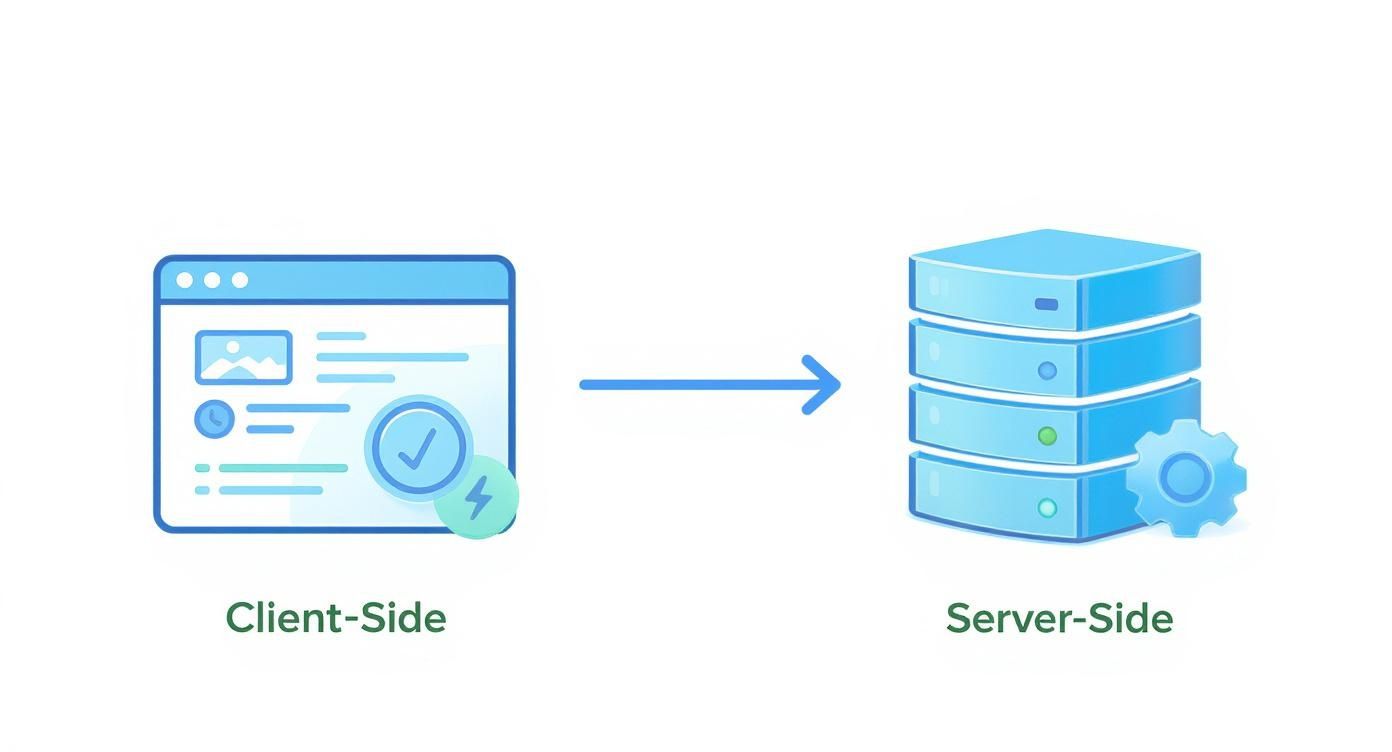
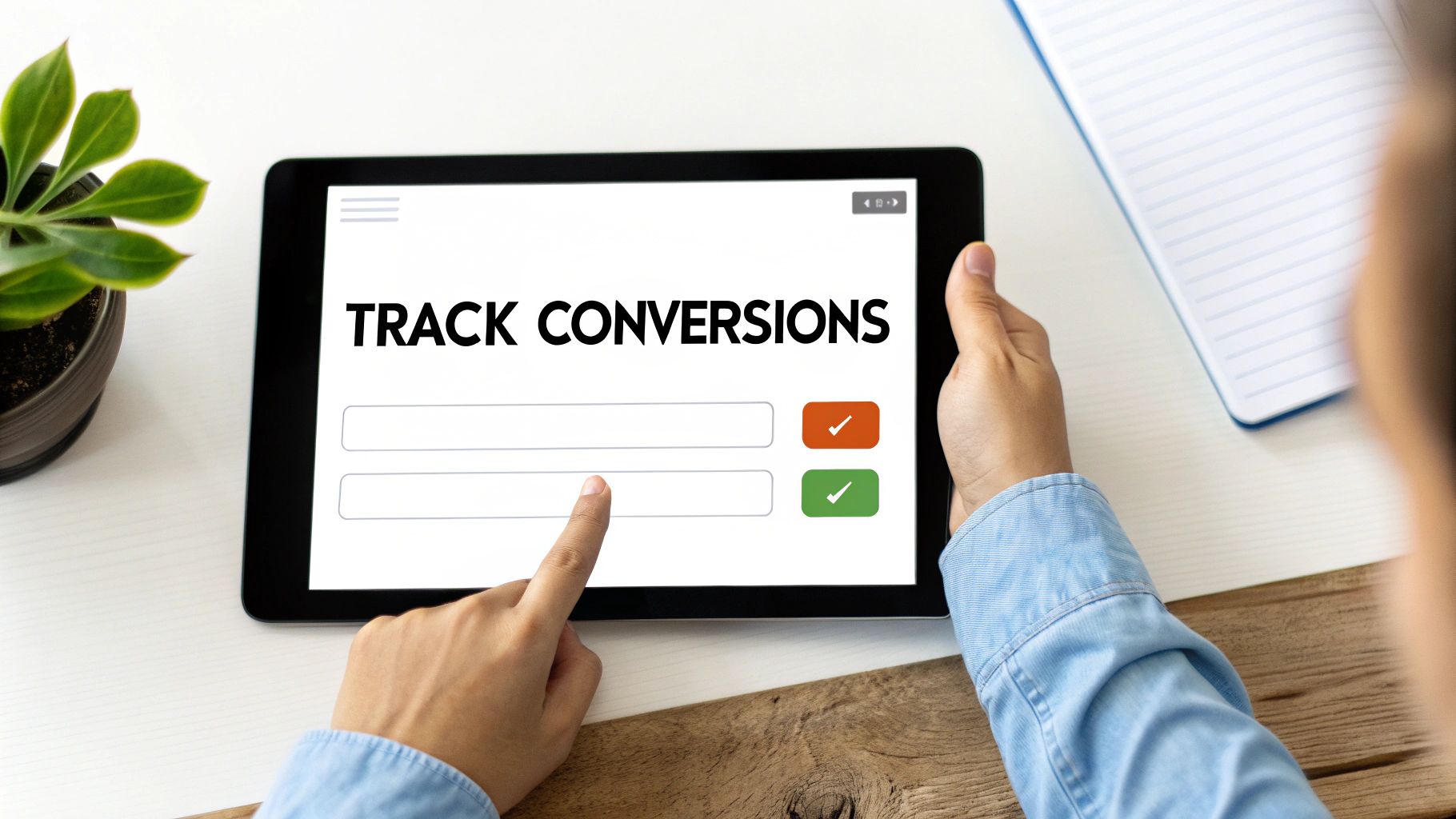
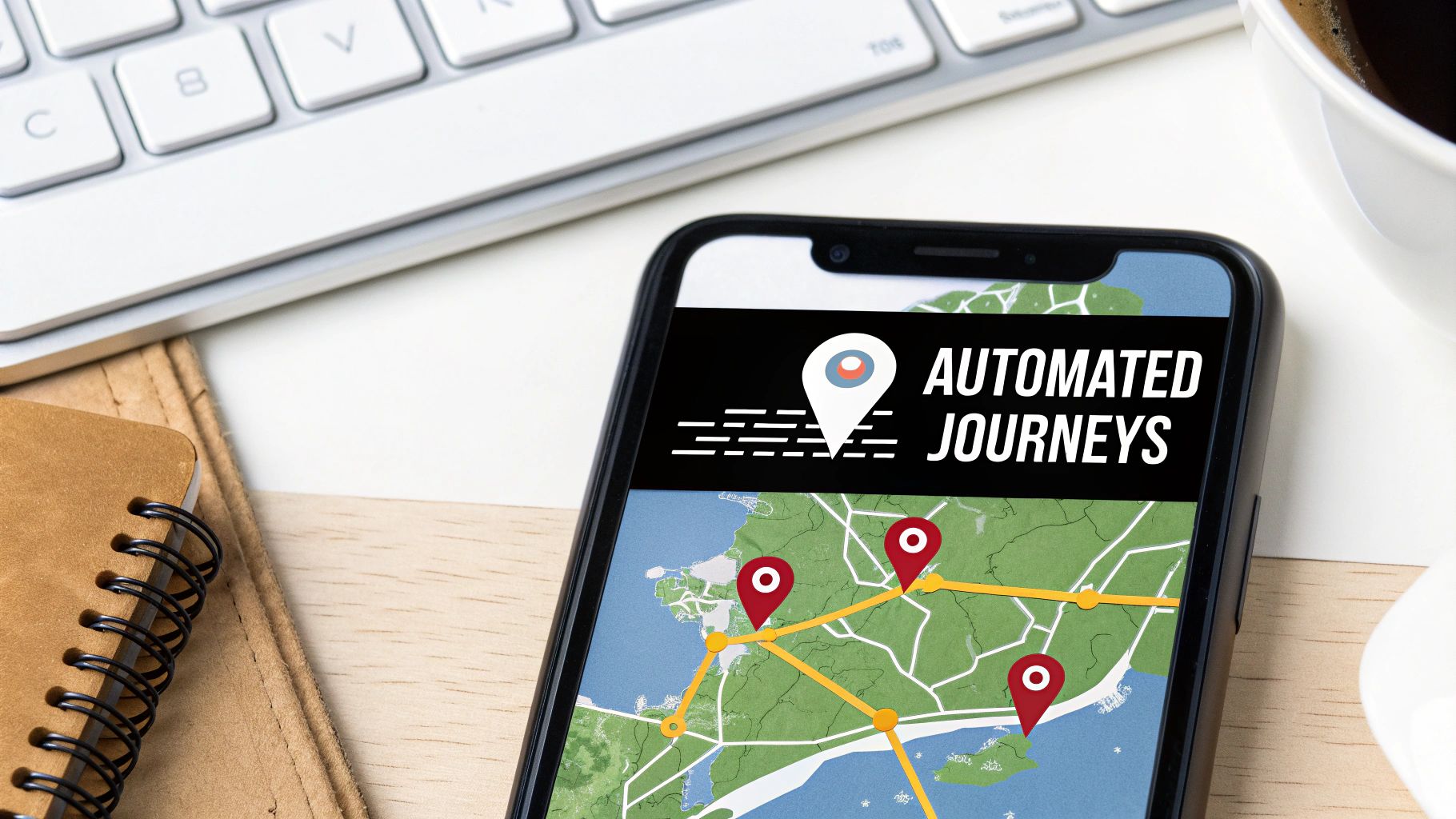



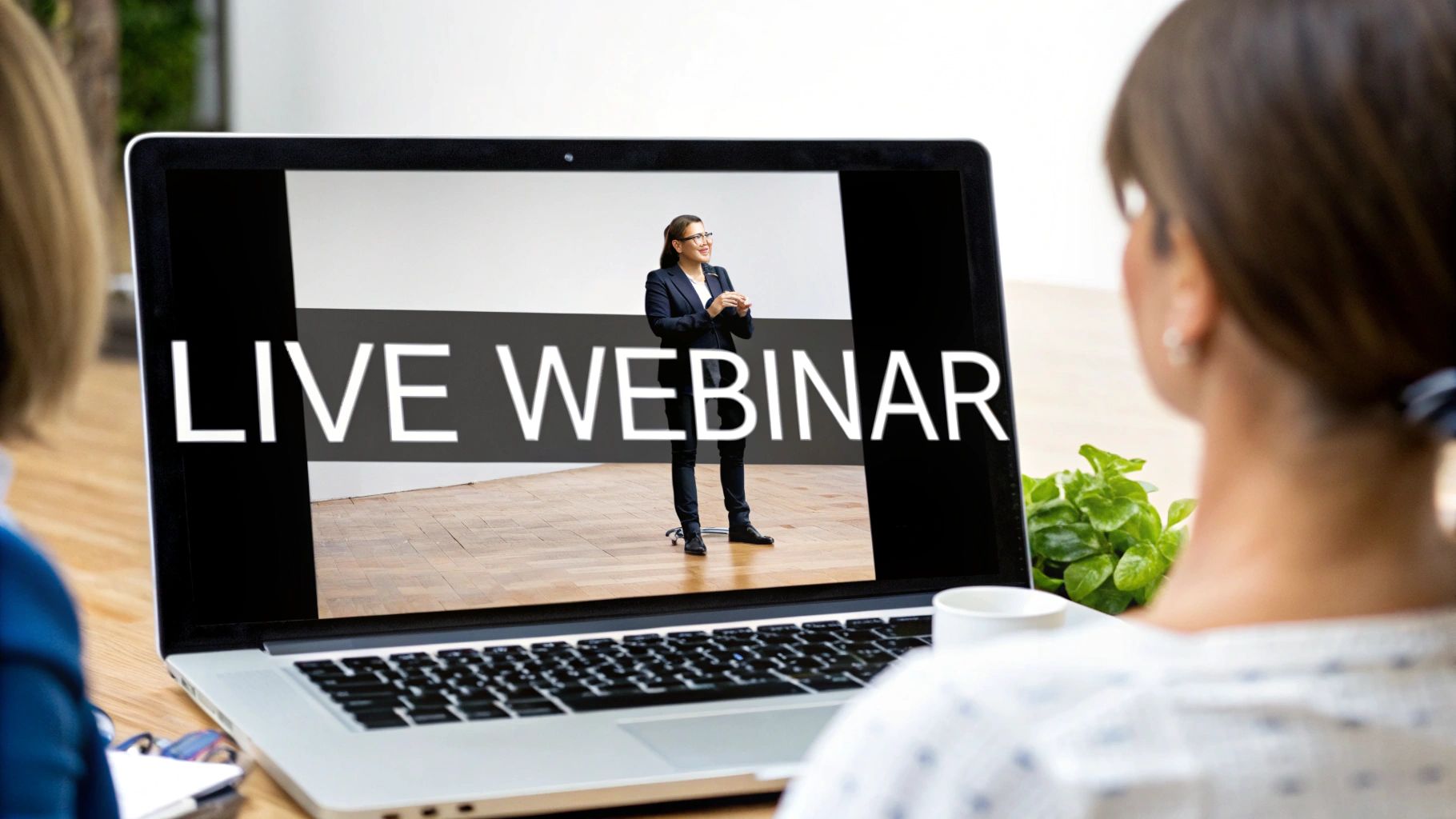

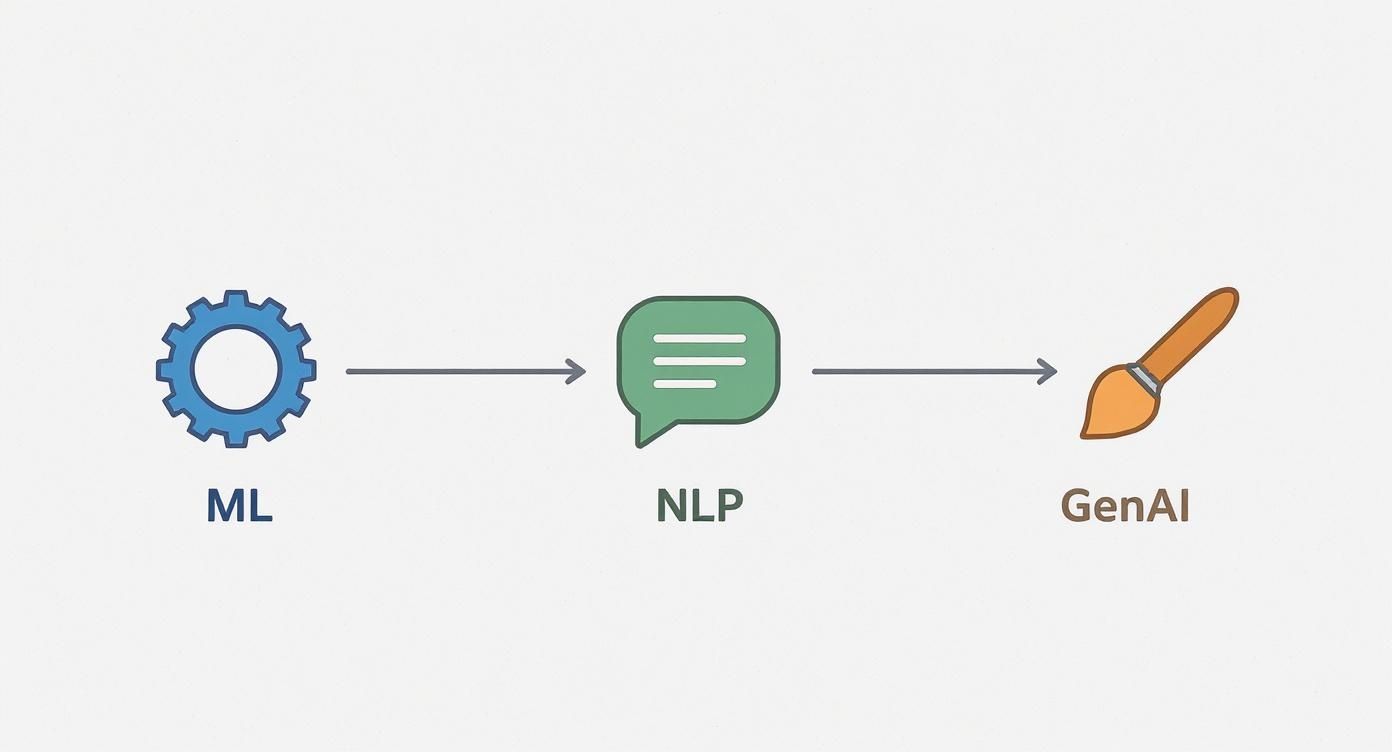

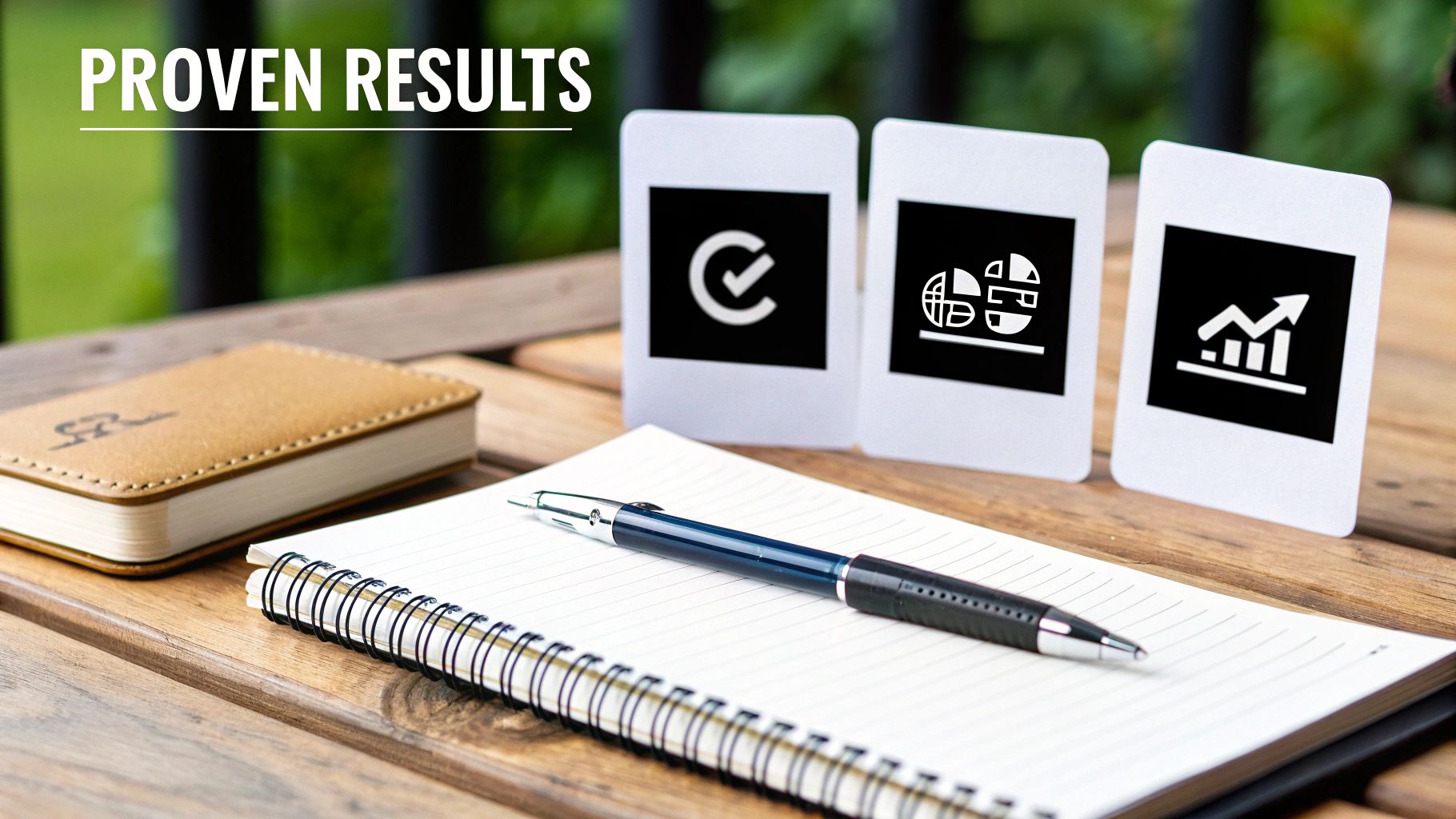
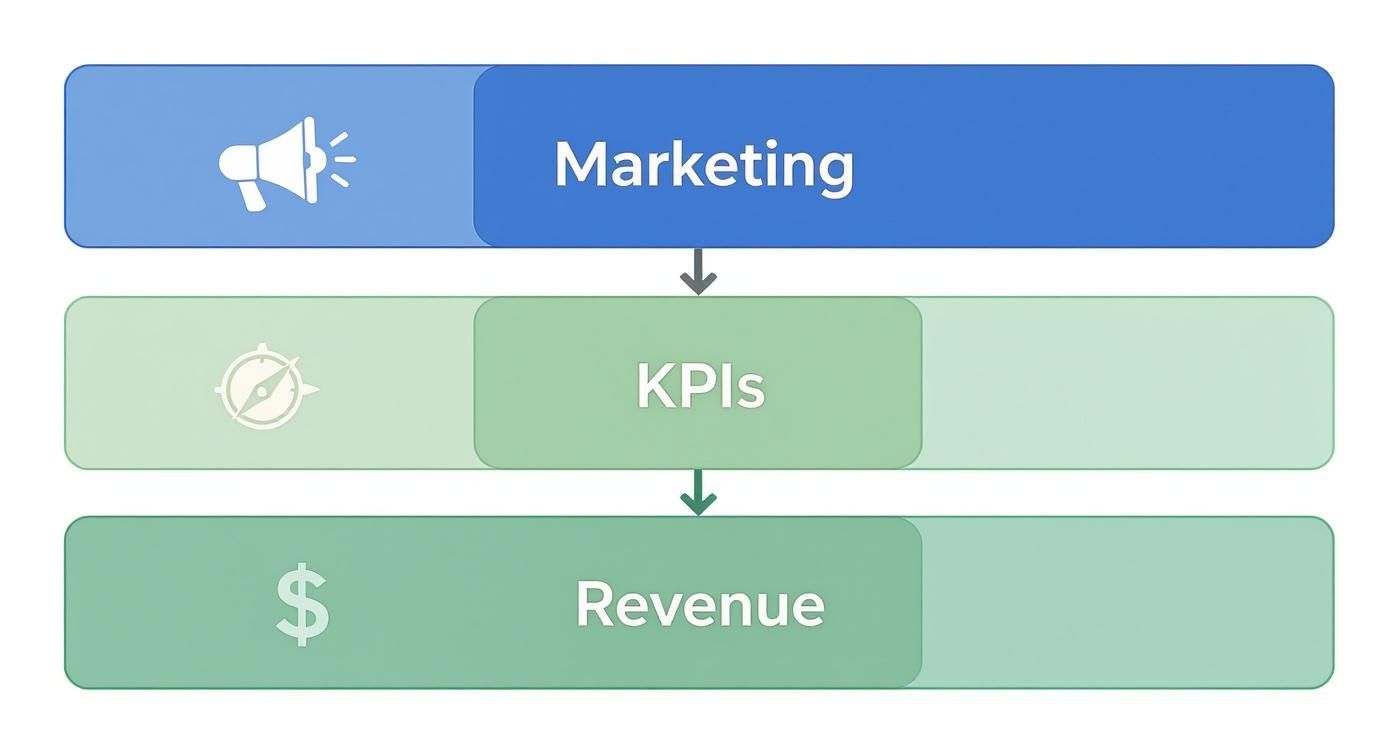



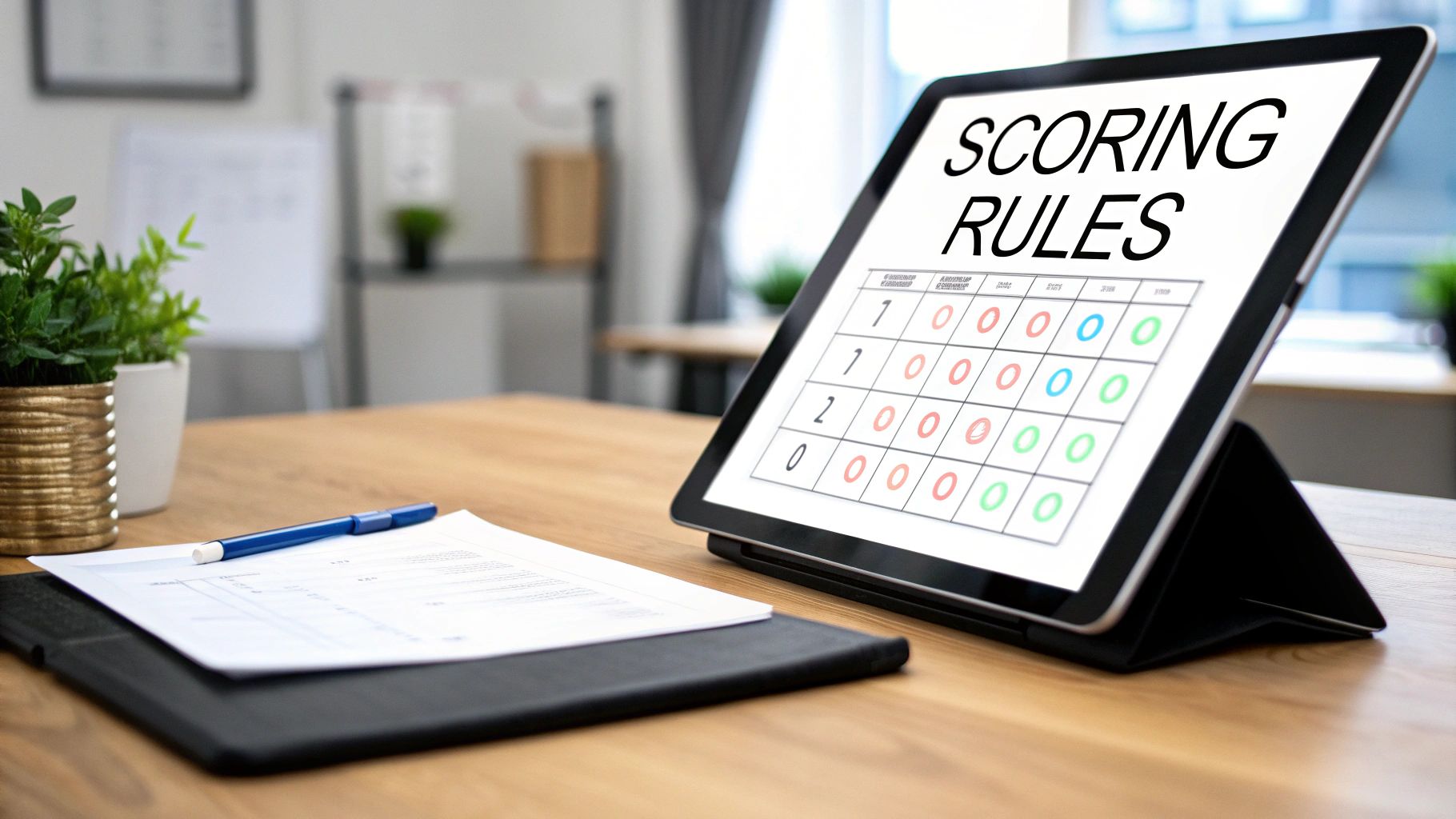
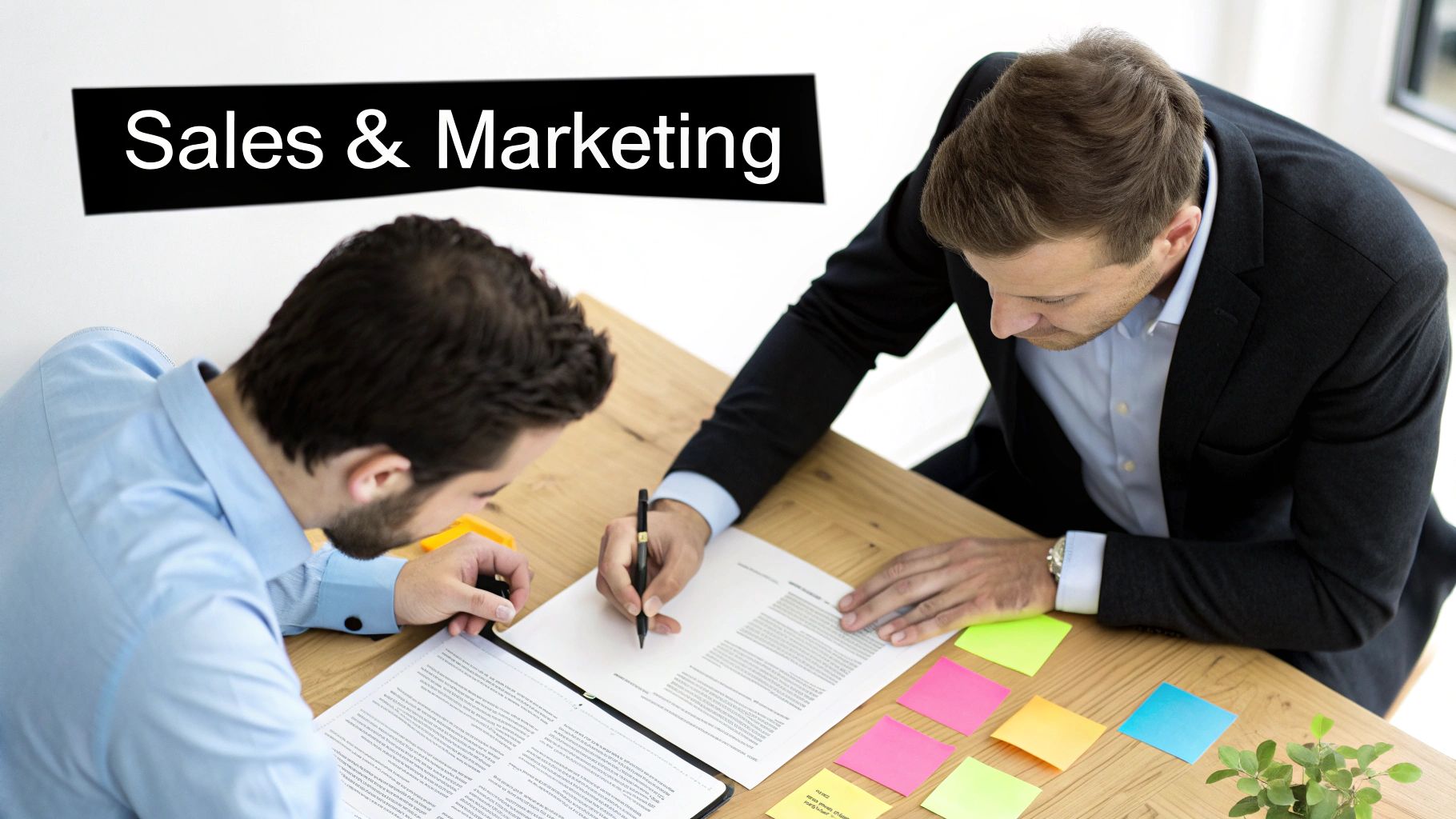

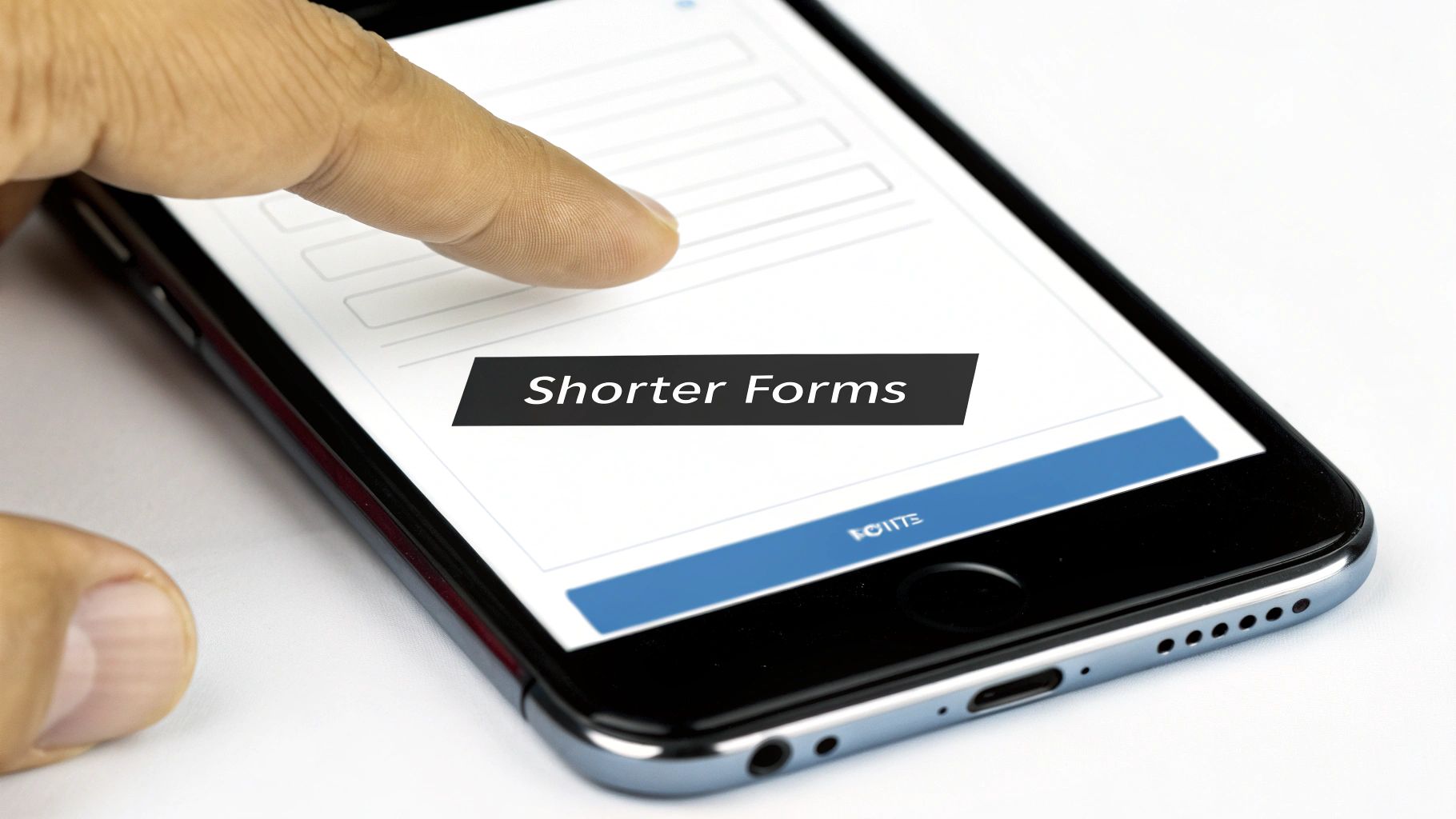
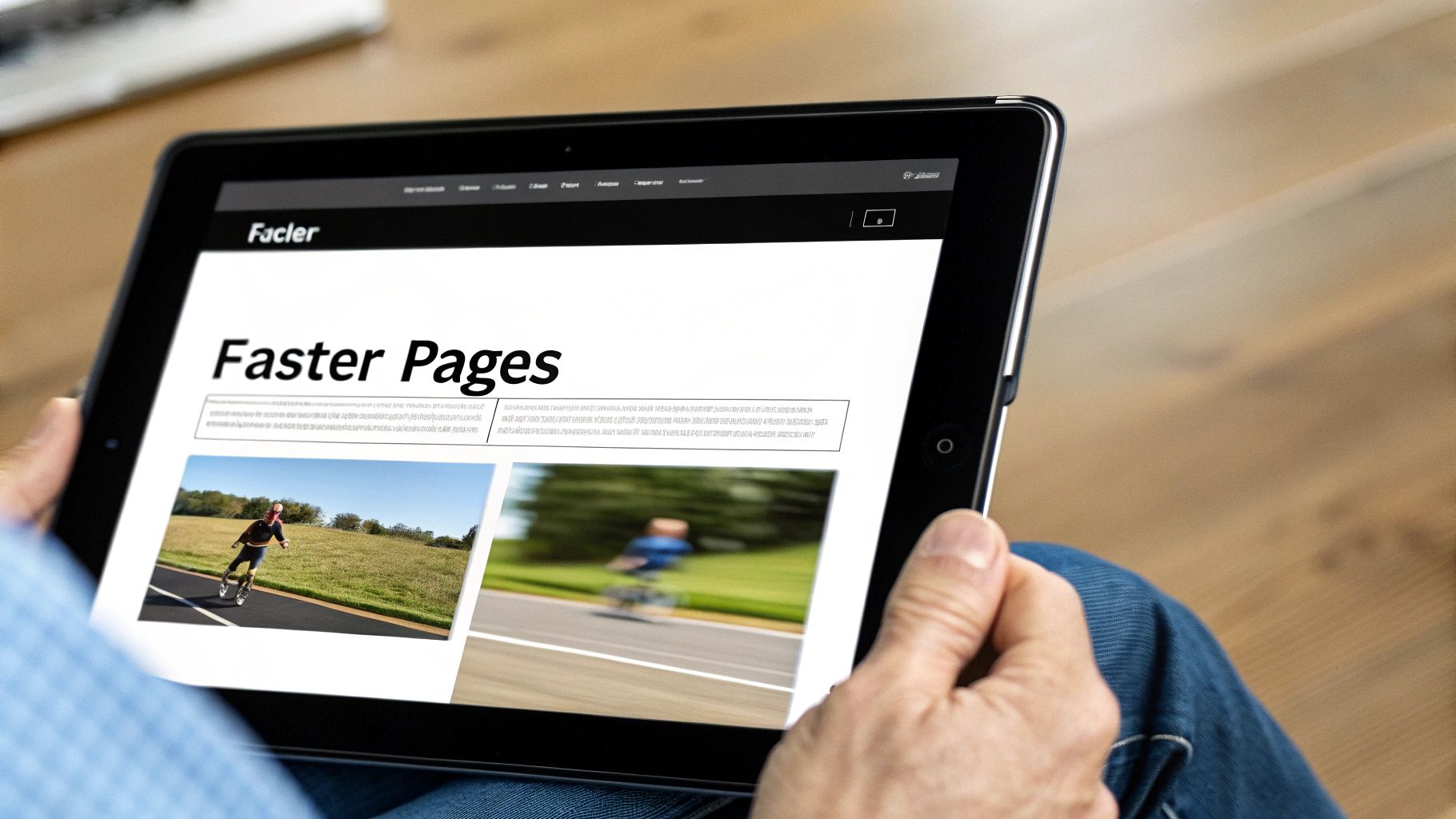

 Okay, knowing the company name behind a visit is a huge win. But the real magic happens when you figure out why they’re on your site at all. This is where you graduate from identification to interpretation, shifting the focus from "who" to "what do they actually want?"
Okay, knowing the company name behind a visit is a huge win. But the real magic happens when you figure out why they’re on your site at all. This is where you graduate from identification to interpretation, shifting the focus from "who" to "what do they actually want?"